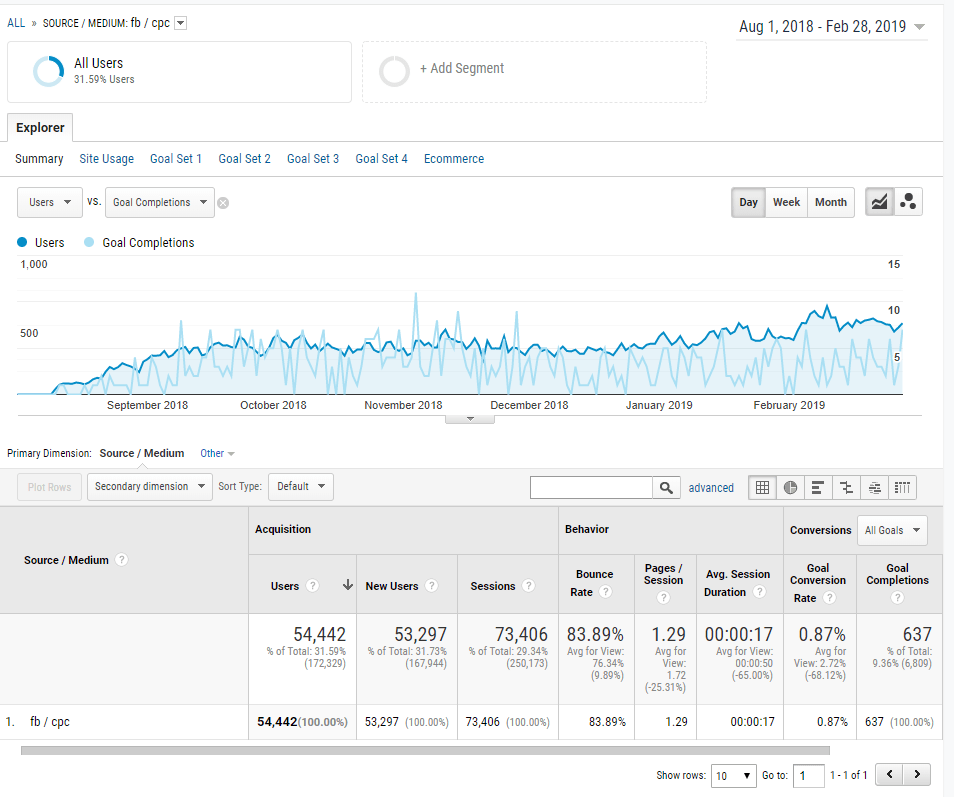Social Media Case Study: Hundreds of New Customers From Core Facebook Campaign
Multi-City Awareness Campaign Yields a Flood of New Customers
Our client is an installer of kitchen & bathroom cabinets for remodels and new construction, and operates in multiple cities. Our challenge getting new residential customers comes down to simply competing for their attention: most folks already have cabinets, and even if their existing cabinets are Grandma’s avocado green cabinets with rococo knobs, if the cabinets are working fine, customers might tend to leave well enough alone.
How to Target Customers in Social Media
Social media management is all about the targeting.
95% of social media campaigns that fail do so because the targeting is set wrong. Now remember, the targeting you set at the commencement of a campaign is not necessarily the targeting that will yield otherworldly results–you need to test and optimize as you go. In this case, our initial targeting (which we tweaked over time) targeted a mix of the the following customers:
- Remarketing website visitors in a radius around the service area. But keep in mind, that this is real “reach”, it’s effective, yes, but you aren’t connecting with anyone new. It also winds up taking up only about 5% of the total ad spend, so it’s a smaller component of the overall budget.
- Industry professionals and homeowners who matched interests such as Countertops (this is an actual interest available in Facebook and did quite well), HGTV, Dwell magazine, and about 60 others.
- We also experimented with some Facebook lookalike audiences (ready-made audiences that Facebook’s systems create). Results with this selection were mixed.
How to Approach Facebook Ad Types Like a Pro
Our next decision was what type of ad to leverage for our Facebook ad campaign. Remember, the campaign strategy dictates the ad type–don’t misstep here, or you campaign might flop. We like Video Ads because they just develop such strong engagement, but there wasn’t a production budget for shooting and editing, and we wanted to get started more quickly. A Boosted Post didn’t seem right either (and almost never is a good choice, it’s marketing without a rudder). We didn’t like the fit with Page Like Ads either, they only give you Facebook followers, our strategy was to get clicks to the client’s website where we had highly developed landing pages already delivering high conversion rates. Then we turned to Carousel Ads, shown here in a final format:

Why did we like the idea of carousel ads? A few reasons. First, kitchens are all about drama, so we wanted to show off a nice gallery of the pro photography the client had developed. Second, we were able to show a variety of styles–this is key here because some folks aren’t going to like every style. With a variety of styles, we have a better chance of really connecting with a potential customer. That is the key: think about your campaign goals and how the ad type fits to that strategy.
TastyPlacement Assemble! Running the Ads and Our Results
We of course set up our UTM Codes, so when our ads are clicked in Facebook, our Google Analytics can track the clicks perfectly. The click-through URLs looks something like:
https://clientsite.com?utm_source=fb&utm_medium=cpc&utm_campaign=austin_spring&utm_content=carousel_2
So, with our ads tagged with Source/Medium set to fb/cpc, we are able to clearly segment out our source and gauge performance. Another important element is that we have goal tracking established. In this case, we measure when a new customer dials in or fills out our website form. This chart below shows 637 new customer inquiries we tracked from our Facebook ad campaign.

Keep in mind, the price of the cabinet install service we are promoting is routinely around 10 thousand dollars, so these customers are pure gold.
Final Thoughts
There is something notable about this case study–it was a successful campaign because it followed a simple series of steps, but by no means did it require any massive effort.


Leave a Reply
Want to join the discussion?Feel free to contribute!